2021 Project of Distinction
A4LE
Putnam City Public Schools
Warr Acres, OK
160,000 SF
900
James L. Capps Middle School embodies a departure from traditional teaching methods and encourages a new inquiry-based model of learning. It is the benchmark that Putnam City Schools is using to measure the quality of future-ready learning environments across the district. Currently, other schools have adopted the inquiry-based learning model and flexible furniture is being installed at across grade levels.
Our design for the new middle school cultivates curiosity, inspires hands-on learning, and supports the environment as a tool for teaching. Inquiry cycles help students to develop intellectually disciplined and thinking skills by providing questions that engage them through curiosity. Whether learners are launching a project, actively researching and investigating new material, innovating and creating prototypes, or presenting findings and solutions, the space adapts to meet the needs of all learning activities. Educators facilitate while learners engage in the material in their own way, providing a student-centric environment for exploration. Utilizing this model, students also develop skills in collaboration, communication, and creativity, all of which are attributes for college, career, and life success.
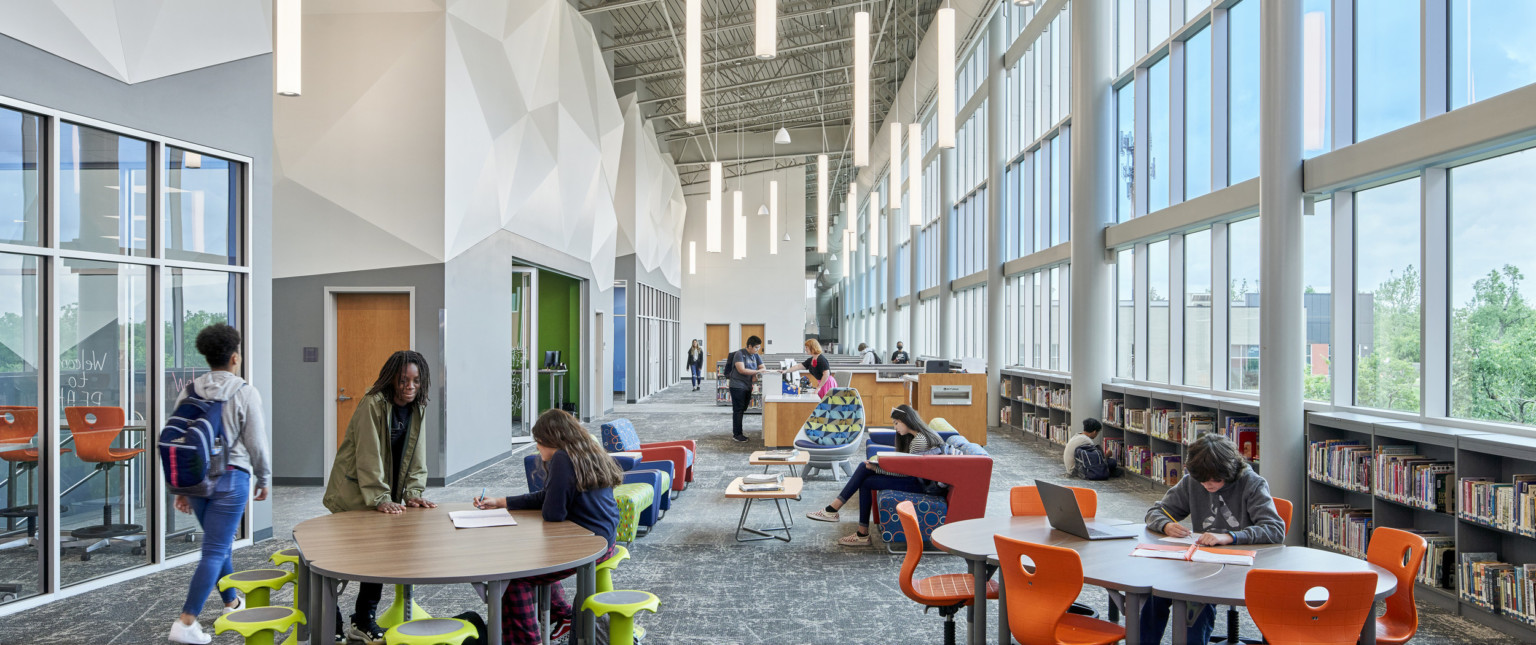
To ensure a successful transition to inquiry-based learning, we guided campus staff through a holistic change process, including a series of activities and workshops. Through our BOLD services, we helped educators develop and implement a clear vision for the future that empowers them to fully leverage their new facility. As part of their BOLD training, educators participated in professional development to learn the inquiry cycle and develop new curriculum to support it. In this model, students are owners of their knowledge acquisition through motivation, engagement, and self-directed activity. Now, educators fully comprehend how the facility can work for them to encourage both formal and informal learning that can occur anywhere on campus.
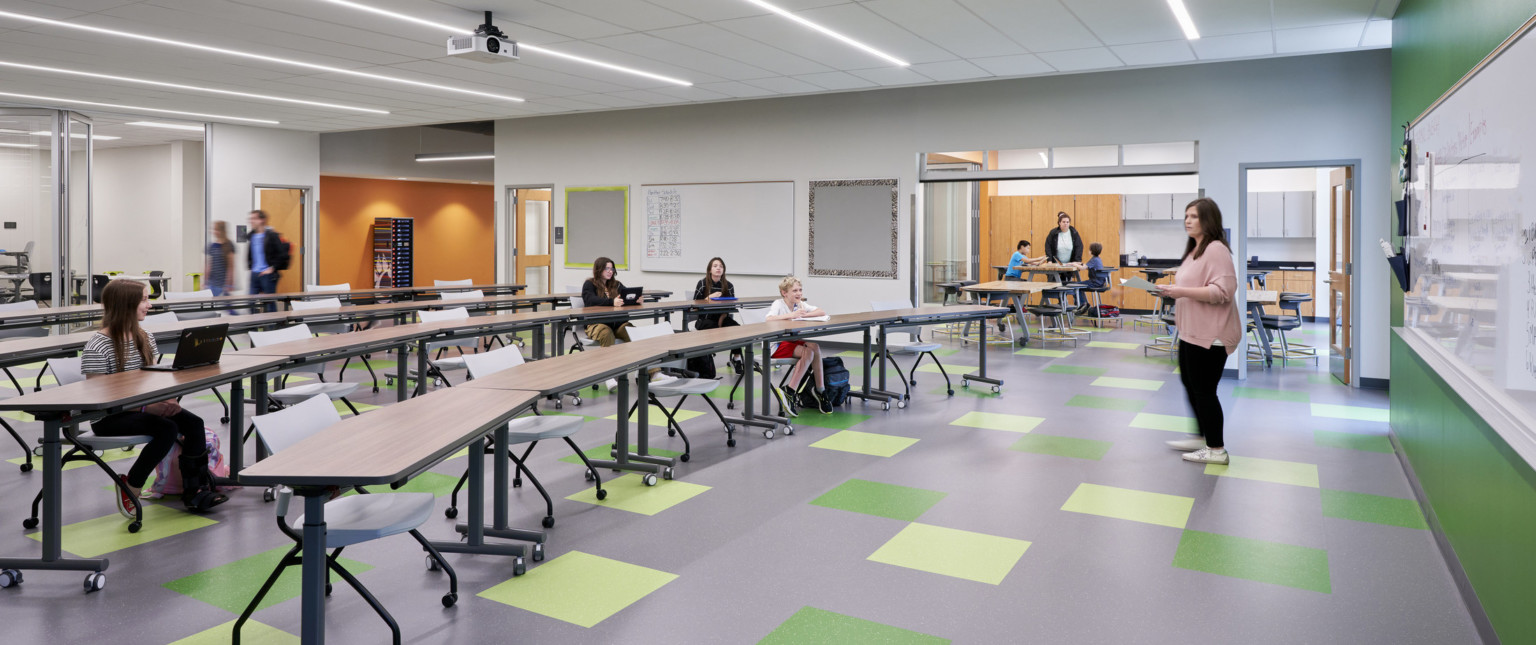
The neighborhood concept is a necessary shift to support the various activities associated with inquiry-based learning. Instead of a singular classroom space, learners have access to a collection of spaces for maximum flexibility in the learning environment. Educators do not own their space, rather students select their desired space to fit their immediate needs. Different neighborhoods have different types of furniture. This level of diversity in furniture not only supports choice, but also accommodates a wide range of body types, ensuring every learner and educator is comfortable. Operable partitions, scaled collaborative areas, and flexible furniture create multi-modal environments for learning. Assorted science and maker spaces occupy the heart of each learning neighborhood, with a large CoLab for 75 students, a maker lab, and a formal science lab.
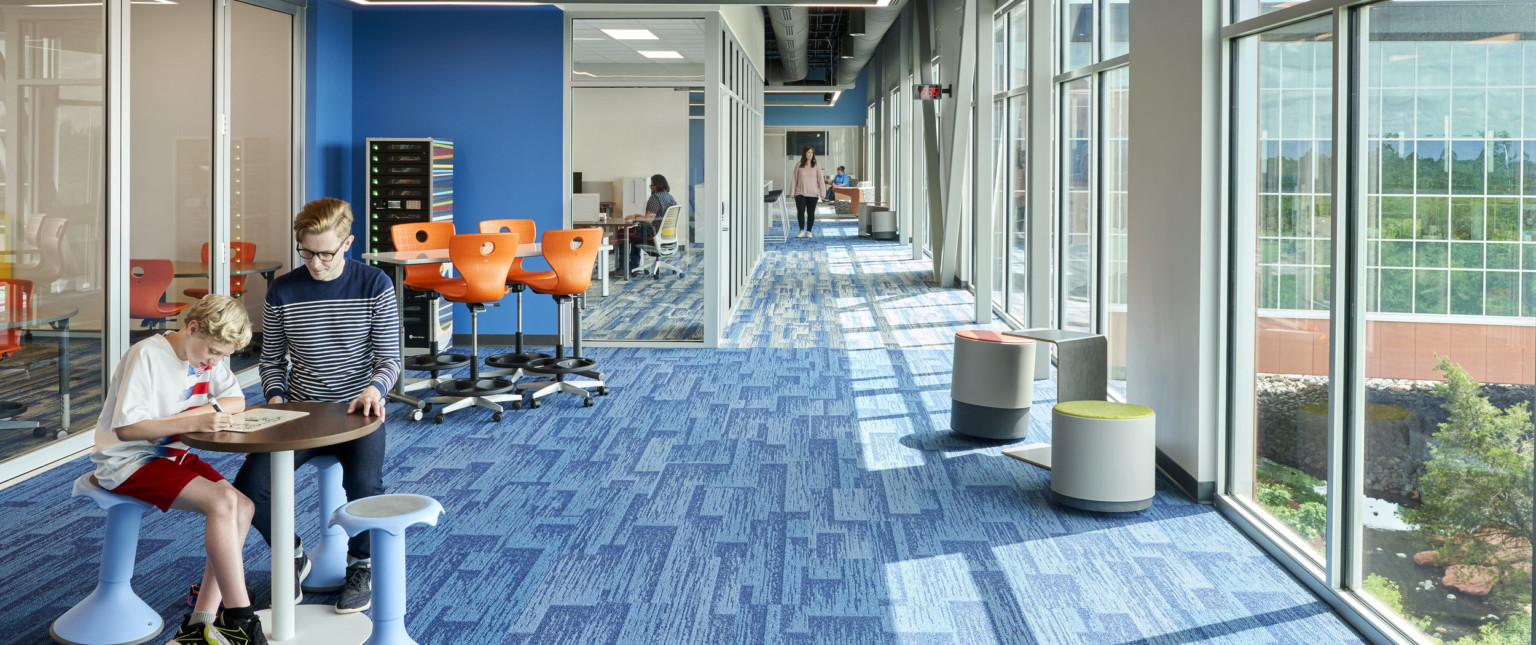
From both a facility and a teaching perspective, the site is a major asset. An existing park with a creek that bisects the site offers outdoor learning opportunities that most middle schools cannot. In the words of a 7th grade science teacher at James L. Capps Middle School, “we can’t build a better science classroom than the creek.” Garage doors open to outdoor environments, such as an art patio, learning stairs that cascade down from the commons, and large boulders that create “campfire” areas underneath the bridge. According to educators, most learning that occurs beyond the learning neighborhoods happens in these outdoor spaces. To preserve as much of the natural environment as possible, the building is sited in portions of the park with the least amount of existing foliage, and at a point in the creek where a limited number of trees were impacted.
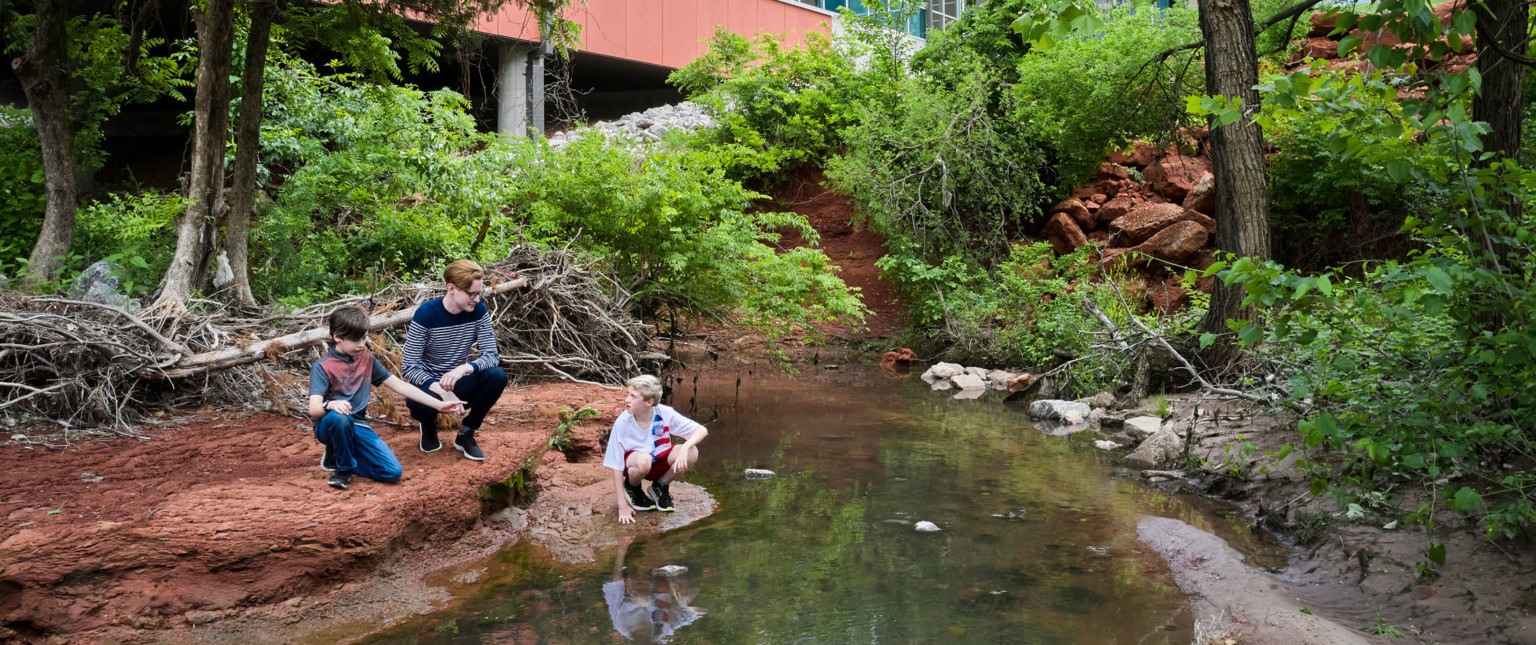
From April to May 2022, we conducted our research-validated Student/Teacher Engagement Index survey with 579 students and 78 teachers/staff. This self-administered, online survey collected anonymous responses to a variety of questions on perceptions and use of the learning environment, collaboration with others, levels of comfort, and more. At James L. Capps Middle School: — 80% of students surveyed agree that the neighborhood design makes them feel like learning is valued — 79% of students say that being part of a neighborhood makes them want to get better grades — 70% of students agree that being part of a neighborhood makes them want to work hard — 75% of teachers surveyed say the neighborhood helps students take part in collaborative learning projects
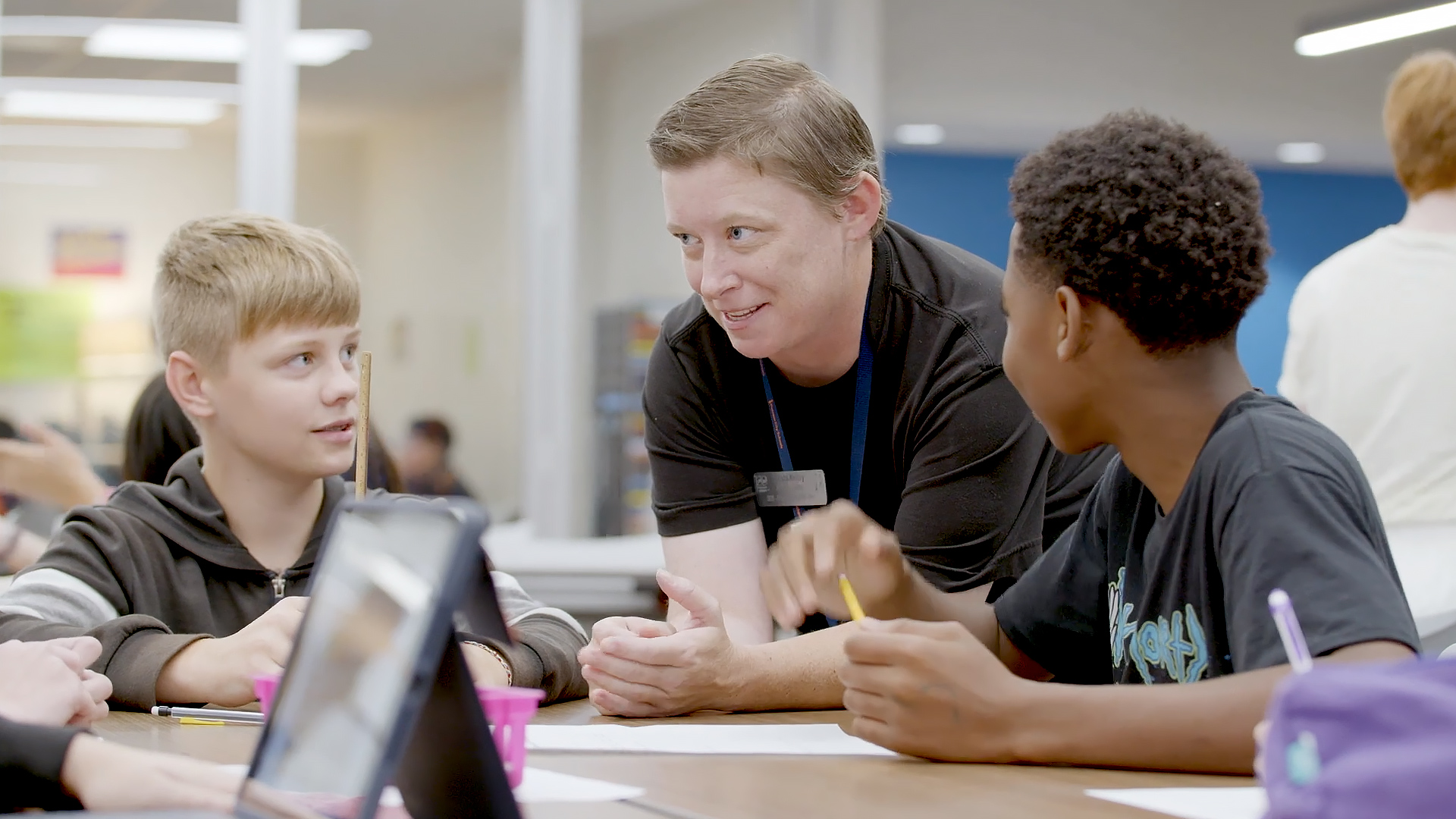
Watch how learning is transformed to an inquiry-based model that cultivates curiosity, inspires hands-on activities, and supports collaboration and exploration.